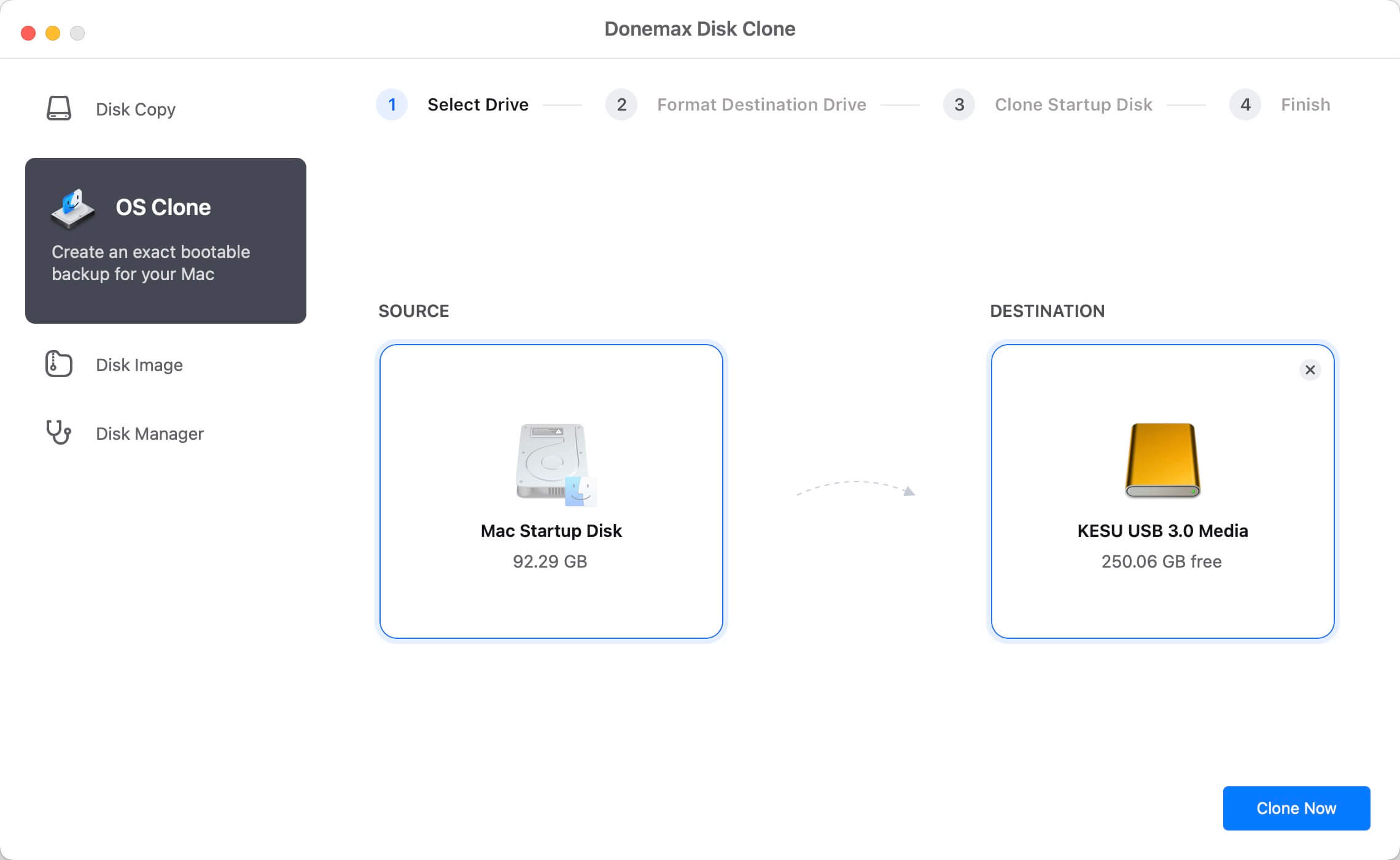Instructions:
In this article, we will show two contents:
macOS 10.15, often known as Catalina, is one of the most recent versions of Apple's desktop and laptop operating system. In addition, the signing certificates for older versions of macOS and OS X are set to expire soon, making now the ideal moment to make a bootable USB install USB based on Catalina. It means that you will only be allowed to install macOS Catalina for any new Macs you buy in the future. Thus, if you're worried about your Mac's health or want to start fresh with Catalina, create an installer bootable USB immediately.
Need help creating a bootable USB installer of macOS Catalina for your Mac device? Here, you'll find the information to start making a USB installation disk to run macOS Catalina.
![Create A macOS Catalina USB Installer]()
macOS Catalina Features:
When compared to prior macOS versions, Catalina introduces more substantial new features. Some programs have been added, and others have greatly improved their features and user interfaces. A more pleasant experience for users and enhanced functionality. A brief rundown of some available software updates and new capabilities follows. Bootable USB with macOS Catalina:
- Music, Podcasts, and Apple TV apps that replace the iTunes app Enhancements to the Photographs app are All made possible by Project Catalyst.
- The Notes app has been updated.
- Apple Mail can now silence messages, block senders, and unsubscribe users.
- Modifications to Safari.
- New and improved Reminders software.
- This new Find My app combines Find My iPhone and Locate My Friends.
- The Mac app Screen Time.
- Sidecar, to attach an iPad to a car's dashboard as a secondary screen.
- Directed by the Sound of Your Voice.
![Create A macOS Catalina USB Installer]()
Why Make a Bootable macOS Catalina Installer?
Having a bootable macOS Catalina installer is useful for a variety of reasons. The four main causes are as follows:
- To wit, you may reinstall Mac OS X from scratch without erasing anything from the hard drive that is currently set as the system's startup media. The standard starting device can be completely erased by booting into the installer.
- It saves you the trouble of repeatedly downloading the installer to set up the operating system on as many Macs as you like.
- If you ever need to roll back to an earlier macOS version, you can easily save a copy of the installer and keep it safe. You may have noticed that whenever a new version of macOS is introduced, there are always those who find fault with it and prefer to revert to an earlier version. It's usually possible to roll back to a previous Mac OS version if you have the installer. This bootable installer is suitable for that purpose.
- Use it as a bootable troubleshooting tool with access to the same tools as the Recovery Volume.
Steps to Create A Bootable USB Installer of macOS Catalina
What you will need to create a bootable installer of macOS Catalina:
- #1 An USB flash drive - larger than 16GB.
- #2 macOS Catalina installer, download it here: macOS Catalina installer download.
- #3 A Mac which can run macOS Catalina.
Then follow the steps below to create a bootable USB installer of macOS Catalina:
Step 1. Connect the USB flash drive to the Mac and name the drive as “UNTITLED”.
Step 2. Go to Lanchpad, open the “Terminal” application.
Step 3. Enter the following command at the Terminal command line, assuming “UNTITLED” is the name of the USB flash drive you want to make into the Mac Catalina installer boot disk:
sudo /Applications/Install\ macOS\ Catalina.app/Contents/Resources/createinstallmedia --volume /Volumes/UNTITLED
Step 4. Hit the Enter/Return key and enter your password to continue.
Let the creation process build the boot installer disk and complete, it may take a little while.
How to use the macOS Catalina USB installer:
- Put the USB drive in and power off the computer.
- Press and hold the Option key before turning on the computer. (If your Mac is Apple silicon chip, press and hold power button)
- A selection of accessible disks will be displayed in the Startup Manager. To boot from the USB disk, select Install macOS Catalina.
- Proceed with your preferred installation of macOS Catalina. The installer allows you to format both the primary drive and any other disks you intend to use for storage. You can access the many tools available from the main menu, such as Terminal, Startup Disk, and Firmware Password Utility.
![Create A macOS Catalina USB Installer]()
What Specific Kind of USB Drive Is Required?
Not just any USB flash drive will do when trying to boot into macOS. There are two primary factors to consider when selecting a flash drive: size and kind.
It's best to check the system requirements for the version of macOS you're trying to install before purchasing a USB flash drive. For instance, the installer for macOS Big Sur is 12.6GB, so you'll want to be sure it can fit in the drive. Use at least a 16GB USB flash disk, but the bigger, the better.
Additionally, be wary of the USB type you pick, and double-check that it's compatible with your PC. The standard USB flash drive can work with your older Mac with USB 3 ports. If you have a newer Mac, you'll need a USB-C flash drive or converter to read and write to external storage devices.
Downloading the macOS Installer File
Getting a hold of a copy of Mac OS X's setup program is simplest when done through Apple's official App Store. But, depending on the OS version your Mac is now running, you may be unable to obtain the previous macOS versions from that location.
The Mac OS X installation file can be downloaded as follows:
Upgrade to macOS Catalina:
The installation for macOS Catalina can also be downloaded through the Mac App Store. As soon as the Software Update box appears, click Get. A second confirmation window will display in a moment, asking if you still want to download macOS Catalina. Confirm your download by clicking the button.
Create A Bootable Clone Backup for macOS Catalina
Actually, you can use macOS Catalina as a bootable macOS if you have a bootable clone backup. You don’t need to install it, and you can run this OS via an external hard drive or restore it to a new Mac so that you can run your old macOS without reinstalling or data transfer.
Disk cloning application can help you securely and easily create a bootable clone for your Mac’s startup disk. Download the top Mac disk cloning software - Donemax Disk Clone for Mac to help you create a bootable clone backup for macOS Catalina.
Donemax Disk Clone for Mac
- Create bootable clone backup for macOS Catalina.
- Create disk image of any disk on Mac.
- Clone HDD, SSD, external storage device on Mac.
Step 1. Open Donemax Disk Clone for Mac on the Mac which runs macOS Catalina and connect an external hard drive to your Mac. Choose disk cloning mode - OS Clone.
![Make A Bootable Clone Backup for Mac]()
Step 2. Select the external hard drive as the destination drive, click on Clone Now button to securely clone all data including macOS Catalina, files, apps, settings to the external hard drive.
![Create a bootable clone for macOS Mojave]()
Once the process gets finished, you can use the external hard drive as a macOS Catalina boot drive on any Mac or restore this startup disk to any other Mac to run macOS Catalina.
![Create a bootable clone for macOS Mojave]()
Conclusion:
The installer for macOS Catalina may be downloaded from the Mac App Store, but if you want to install it on numerous Macs without downloading it each time, you can construct a bootable usb installation.
This bootable USB installer can reinstall macOS, install macOS on a second hard drive, or fix any OS-related problems your Mac may be experiencing. This guide will inform you how to make a USB drive capable of booting up and installing Catalina.
With this Mac disk cloning software, you also can create a bootable clone for macOS Catalina and use it on any other Mac whether it has installed macOS Catalina or not.






